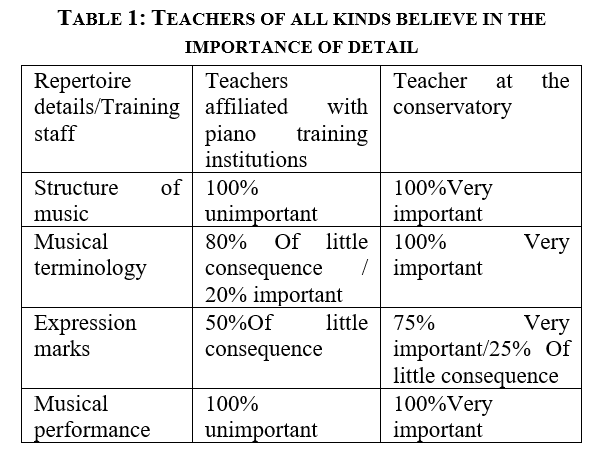The Nature and Specificity of Music Training: A Multifaceted Exploration
DOI:
https://doi.org/10.70393/616a736d.333039ARK:
https://n2t.net/ark:/40704/AJSM.v3n5a02Disciplines:
EducationSubjects:
Curriculum DevelopmentReferences:
10Keywords:
Music Training, Piano Education, Piano TeachingAbstract
The predecessor of the piano was the plucked clavichord, also known as the harpsichord. It is much the same as the internal principle of the piano, which is equipped with a soundboard and many taut strings inside the body. The difference is that the piano's hammer strikes the strings, and the plucked clavichord uses a plucked plectrum to pluck the strings.
In addition, there is a keyboard instrument of the same lineage, the clavichord, which is also an instrument equipped with a percussive device, and is pronounced with a brass mallet; It was not as widely used as the plucked clavichord, and was mainly played in aristocratic families at the time.
In the 17th ~ 18th centuries, the plucked piano had a very prominent position in the musical life at that time, and it can be said that it was its heyday.
By the beginning of the 18th century, the music of continental Europe was developing rapidly, and the plucked claviest piano with weak volume could no longer meet the needs of musicians at that time, so it was gradually replaced by the loud piano.
Downloads
Metrics
References
[1] Herholz, S. C., & Zatorre, R. J. (2012). Musical training as a framework for brain plasticity: Behavior, function, and structure. Neuron, 76(3), 486-502. https://doi.org/10.1016/j.neuron.2012.10.011
[2] Münte, T. F., Altenmüller, E., & Jäncke, L. (2002). The musician's brain as a model of neuroplasticity. Nature Reviews Neuroscience, 3(6), 473-478. https://doi.org/10.1038/nrn843
[3] Ericsson, K. A., Krampe, R. T., & Tesch-Römer, C. (1993). The role of deliberate practice in the acquisition of expert performance. Psychological Review, 100(3), 363–406. https://doi.org/10.1037/0033-295X.100.3.363
[4] Zatorre, R. J., Chen, J. L., & Penhune, V. B. (2007). When the brain plays music: auditory–motor interactions in music perception and production. Nature Reviews Neuroscience, 8(7), 547-558. https://doi.org/10.1038/nrn2152
[5] Lahav, A., Saltzman, E., & Schlaug, G. (2007). Action representation of sound: Audiomotor recognition network while listening to newly acquired actions. Journal of Neuroscience, 27(2), 308-314. https://doi.org/10.1523/JNEUROSCI.4825-06.2007
[6] Patel, A. D. (2011). Why would musical training benefit the neural encoding of speech? The OPERA hypothesis. Frontiers in Psychology, 2, 142. https://doi.org/10.3389/fpsyg.2011.00142
[7] Repp, B. H., & Su, Y. H. (2013). Sensorimotor synchronization: A review of recent research (2006–2012). Psychonomic Bulletin & Review, 20(3), 403–452. https://doi.org/10.3758/s13423-012-0371-2
[8] Kraus, N., & Chandrasekaran, B. (2010). Music training for the development of auditory skills. Nature Reviews Neuroscience, 11(8), 599-605. https://doi.org/10.1038/nrn28829.
[9] Moreno, S., & Bidelman, G. M. (2014). Examining neural plasticity and cognitive benefit through the unique lens of musical training. Hearing Research, 308, 84-97. https://doi.org/10.1016/j.heares.2013.09.012
[10] Schellenberg, E. G. (2019). Correlation = causation? Music training, psychology, and neuroscience. Psychology of Aesthetics, Creativity, and the Arts, 13(2), 147–152. https://doi.org/10.1037/aca0000233 (Note: Schellenberg offers a critical perspective on transfer claims, included for balance).

Downloads
Published
How to Cite
Issue
Section
ARK
License
Copyright (c) 2025 The author retains copyright and grants the journal the right of first publication.

This work is licensed under a Creative Commons Attribution 4.0 International License.

















